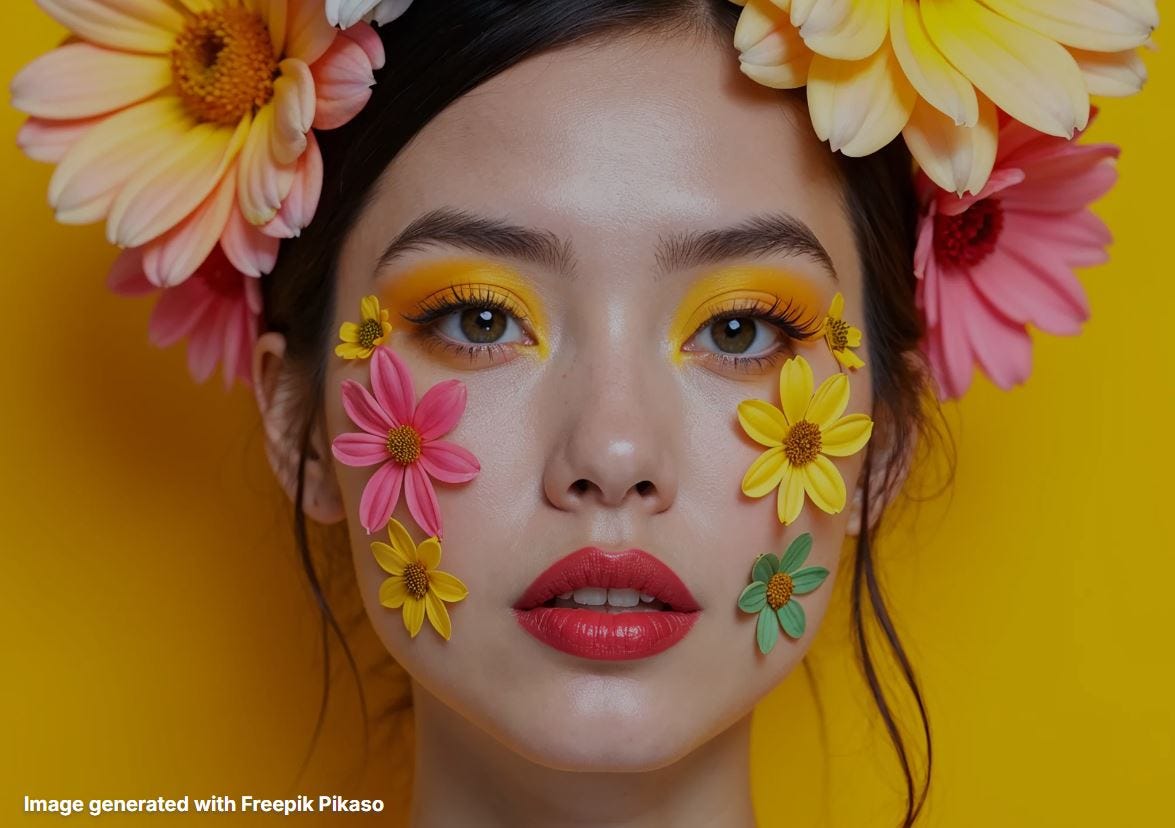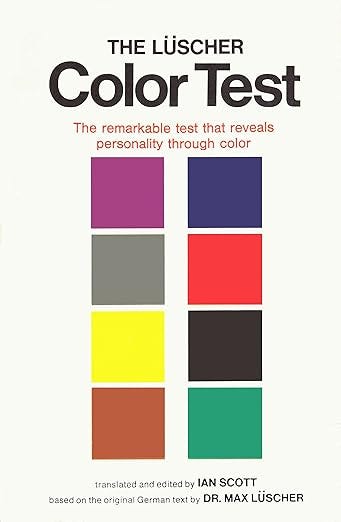The Hidden Power of Color
A strange little test holds a curious clue.

Ever wondered why you feel more calm in a room painted soft blue, but more agitated around bright red walls?
Or why certain brands just feel trustworthy, while others scream for attention?
Or why one book cover grabs you - and another vanishes into the scroll?
What if the colors you like could reveal your stress levels, your emotional state - even your biggest unmet needs?
It’s not random. It’s not personal taste.
It’s energy.
It’s vibration.
It’s frequency.
As Nikola Tesla famously said:
“If you want to find the secrets of the universe, think in terms of energy, frequency, and vibration.”
That includes color.
The Psychology of Color
Long before color wheels made it into Canva and branding kits, psychologists were studying color to understand human behaviour.
Color affects mood, perception, decision-making, and even heart rate. In clinical settings, it’s been used to access subconscious states, reveal emotional imbalances, and guide therapeutic work.
And that’s where I first came across the Lüscher Color Test.
The Lüscher Color Test: A Window Into the Subconscious
Back in the 1990s, while studying clinical hypnotherapy, I was introduced to a curious little tool created by Swiss psychotherapist Dr. Max Lüscher. His theory was bold and simple:
“Color choices are not about preference - they’re a mirror of your inner state.”

The test itself is fast, non-verbal, and surprisingly revealing. No talking. No questionnaires. Just color cards - and the order you choose them.
Each color, according to Lüscher, carries a specific psychological frequency. The ones you're drawn to reflect what you need most. The ones you avoid may highlight inner conflict, unmet desires, or areas of stress.
Try The Test Online - Free
You can take a free version of the Lüscher Color Test right now:

It’s fast, easy, and I’ve found it to be surprisingly accurate.
Once you get your results, circle back to this article and see how the color meanings line up with your experience.
What Each Color Represents
Here’s a quick guide to the color meanings in Lüscher’s system:
Grey – Detachment, neutrality. A wish to remain uninvolved or avoid stress.
Blue – Peace, calm, belonging. The need for harmony or emotional stability.
Green – Control, pride, resilience. Often linked to willpower or self-respect.
Red – Energy, drive, passion. Desire for action, sex, or achievement.
Yellow – Optimism, joy, spontaneity. Hopeful outlook or need for change.
Violet – Sensitivity, creativity, connection. Tied to emotional or spiritual needs.
Brown – Physical comfort, stability. Desire for security, touch, or routine.
Black – Resistance, refusal, rebellion. Rejection of current circumstances.
A Real Story: The Color of Burnout
I once had a client who placed black first and blue dead last.
On the outside, she was composed. No obvious signs of distress. But her choices told another story.
Black first = a need to block everything out.
Blue last = no room for peace, no sense of emotional safety.
As it turned out, she was in full-blown burnout. The Lüscher Color Test gave us a way to explore what she couldn’t yet put into words.
Sometimes, colors speak louder than language.
Take A Quick Test Right Here
Here’s a quick version you can try right now:
Rank these colors from 1 (most liked) to 8 (least liked):
Once you’ve ranked them, take note of:
Your first choice = may relate to what you need most at this moment.
Your last choice = where you may be “avoiding” or stressed at this moment.
Refer to the color meanings according to Max Lüscher (listed above).
It’s not a diagnosis. But it’s a conversation starter with yourself.
Color Psychology in Branding & Marketing
Marketers have long used color to influence behaviour and emotion.
Think about it:
Red = urgency, appetite, energy (Coca-Cola, Netflix)
Blue = trust, calm, professionalism (Facebook, PayPal)
Green = health, nature, growth (Whole Foods, Spotify)
Yellow = optimism, youth, friendliness (McDonald’s, IKEA)
Black = luxury, power, sophistication (Apple, Chanel)
These choices aren’t aesthetic. They’re strategic emotional triggers.
color shapes how people feel about a product - before they even read a word.
For Writers: Your Book Cover Lives or Dies by Color
Now let’s talk directly to you, an Inkspired writer.
If you’re creating your own book covers, here’s something important.
Forget that old line about not judging a book by its cover!
People absolutely will - and color is often the first trigger.
Maybe you’ve not heard the why explained in detail before, but the colors you choose can make or break that first impression.
They don’t just catch the eye - they shape the feeling your book gives off before a single word is read.
Want calm or trust? Go with blues or greens.
Want excitement? Try reds or yellows.
Writing about mystery or transformation? Think violet or deep indigo.
Selling bold ideas or edgy nonfiction? Go black, grey, or stark white.
Whether it’s your background, title font, or accent colors - every choice carries energetic weight.
The colors you use might determine whether your book gets clicked, picked up, or passed over.
Final Thought: Color is Energy in Disguise
Color isn’t just a design decision. It’s a vibrational signal.
Every color has a frequency. A feel. A message. And we read it instantly - even if we’re not aware of it.
So the next time you feel drawn to a color - or repelled by one - pause and ask:
What’s that color saying about me? And what might I be saying through the colors I choose?
Until next time,
Mike Searles
MENTOR MIKE
mentormike.net
Inkspired Community Contributor
PLEASE NOTE: While tools like the Lüscher Color Test can offer fascinating insights, they’re not a substitute for professional care. If you’re feeling overwhelmed or emotionally stuck, please reach out to someone qualified who can help.
*American English spelling of “color” used throughout this article.
About our author: Mike Searles (Mentor Mike) is a proud member of the Inkspired Community. He helps Boomers and retirees turn their life experience and hard-won wisdom into income - by packaging what they know into high-value offers that teach, inspire, and create real impact. His core message? Monetize Your Life.
It’s such a treat to get unique points-of-view from our guest writers. If you have a story idea for the Inkspired Community newsletter, direct message Maryan Pelland





Really cool post! Color... um... *colors* everything we do, so it's great to get more understanding. I once interviewed a woman (years ago) whose job was to figure out the most likely color of the year for Pantone and everyone else. One thing she told me is that trendy colors are not trendy at all. They are selected by various industries years before you see them in paint or on new cars or anywhere else.
This was fascinating! And the color test was also amazingly accurate for me — blue my favorite — my second favorite “brown” but I would have called it more adobe. I love the Southwest colors and have incorporated them into my rebranded website. You’re spot on about book covers!